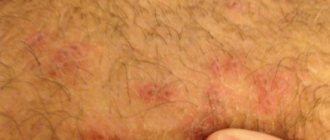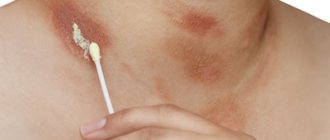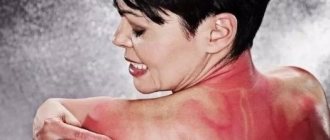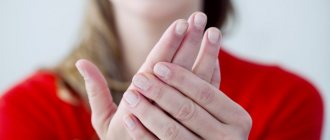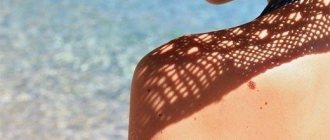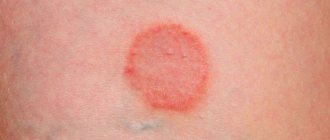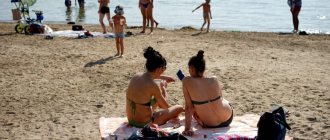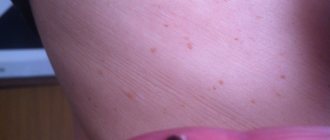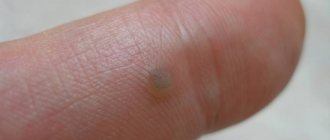Last update: 01/14/2020
In case of burns, regardless of their severity, the skin takes the first blow. The most serious harm is caused to it: even a 1st degree burn leaves redness on the surface of the skin, what can we say about deeper lesions (after which the removal of dead tissue is sometimes required).
How do you understand that a burn requires treatment? Our skin took care of this.
When you receive a burn of 2nd degree or higher (there are 4 in total), blisters filled with a yellowish liquid - exudate - form on the damaged surface of the body. These bubbles appear directly where the burn occurred, so even if the victim has lost consciousness or has a temporary loss of sensation, the burn site is easy to detect by these characteristic bubbles.
Reasons for education
The reason for the appearance of blisters and bubbles at the burn site is the traumatic effect on the top layer of skin of high temperature, radiation, electricity, and aggressive chemical reagents.
Thermal burns are a common cause of blisters and blisters on the surface of the skin. It occurs during prolonged heat exposure :
- skin contact with open flame;
- touching a hot object;
- exposure to boiling water or steam.
The effects of electric current are partly thermal effects, and blisters occur at relatively low arc power (the higher the current, the deeper the burn).
The second degree of burn can be observed as a result of prolonged exposure to radiation (solar, ionizing), as well as acids, alkalis, salts of heavy metals and other reagents.
Mechanism and signs of appearance
Blisters and blisters from burns can appear either immediately or some time after contact with high temperatures.
The site of the skin injury initially looks reddened, slightly swollen (1st degree burn), and the pain is quite strong, but tolerable.
After a few minutes, an elevation appears at the site of the lesion, quickly filling with translucent yellowish serous fluid, sometimes mixed with blood.
The surface of the vesicles is usually painless upon palpation; pain is caused by the effect on the nerve endings under the formed blister. With a relatively mild burn, the bubbles and blisters do not exceed 1.5-2 cm in size. With a more severe degree of injury, they can merge and form the so-called. bulls.
Healing of burns usually takes 2-3 weeks , unless complications arise in the form of infection of the affected area.
Wound healing time
Wound healing after a burn depends on several factors:
- Presence of complications. With purulent, necrotic and inflammatory complications, healing is delayed for a long time;
- Patient's age. The younger the person, the faster the healing occurs;
- Timely consultation with a doctor;
- Treatment provided;
- The presence of chronic pathologies and immunodeficiency pathological conditions.
For small and shallow burns, healing occurs in 1 to 2 weeks. If the burn begins to go silent, the recovery time increases by 7 to 10 days.
With deep and weeping wounds, healing is long and difficult. Restoration of damaged tissue occurs within several months. Often in this case, scarring changes in the skin are formed.
What to do
Blisters occur with 2nd degree burns, regardless of correctly provided first aid.
Immediately after contact with the source of exposure, it is necessary to cool the skin on the affected area by holding it under cold (not lower than +16C) running water for at least 15 minutes. But even following this recommendation does not prevent the formation of a blister, because... detachment of the upper layer of the epidermis occurs immediately after temperature exposure.
If one or more blisters have formed, the severity of the lesion must be assessed . If the area of the blisters is small - no more than 1-2 cm, you can simply apply an anti-burn and antiseptic agent and cover the affected area with a sterile dry bandage.
In case of severe pain, it is necessary to give the victim anesthetic . At the same time, in order to avoid negative consequences for the victim’s health, it is necessary to correctly assess the severity of the injury.
For example, if the burn area is several centimeters, it is enough to give the patient a regular painkiller (ibuprofen, paracetamol). Whereas with extensive skin damage (an area larger than the palm of your hand), the victim may develop pain shock, so he needs to be given narcotic analgesics (morphine, promedol, etc.).
Photo 2. In the first minutes after an injury, it is important to calm the person and relieve pain. Source: Flickr (advcare pharmacy).
What not to do
Errors in providing first aid lead to complications - tissue infection, abscess, sepsis.
The most common violations of first aid rules for burns are:
- puncturing and opening small bubbles;
- use of non-sterile piercing instruments;
- applying fat-containing substances to the affected area (butter, cream, sour cream);
- using human urine as an antiseptic;
- applying a bandage that is too tight or wet;
- prolonged application of fabric to a burst blister;
- too much exposure to cold.
Complications
Even second-degree burns, if the affected area is quite extensive, can lead to serious complications. If the burns are 20% or more, dehydration of the body occurs - dehydration , which manifests itself in the form of thirst, decreased diuresis, dizziness and dry mucous membranes. The victim must be given water with added table salt (half a teaspoon per half liter of water) if he is not vomiting.
Another type of complication resulting from a second-degree burn when blisters appear is skin infection due to the blister rupturing or being punctured by an unsterile instrument. The appearance of scar tissue at the site of burns can occur regardless of the assistance provided, because this is associated with the formation of joint and tendon contractures.
Note! Burns lead to a decrease in the number of tissue macrophages due to a lack of fibronectin. As a result, local immunity decreases and the risk of developing a microbial infection at the burn site increases. Because of this, streptococcal or staphylococcal pyoderma often develops with a second-degree burn.
Treatment of blisters after burns
Small blisters after burns should be treated with local antiseptics :
- alcohol (if the surface of the skin at the burn site is not damaged);
- miramistin;
- chlorhexidine;
- hydrogen peroxide;
- furatsilin.
After initial treatment, local antibiotic ointments , as well as drugs that accelerate skin regeneration.
Is it possible to puncture a bladder?
Only large blisters that have a risk of spontaneous rupture and opening can be pierced
It is important! It is not recommended to open bubbles if they are small. The exception is large area blisters (from 5 cm), which have the risk of spontaneous rupture and leakage of exudate.
Such blisters must be carefully punctured using a sterile instrument . It is better if this is done by a specialist who properly drains the bladder to prevent refilling with fluid.
If it is not possible to get medical help, you can use a sterile instrument (syringe needle, scarifier). The exudate must be carefully removed by cutting the surface of the blister a few millimeters and pressing on the blister to release the pus. After this, you should treat the area with an antiseptic without alcohol and apply a dry gauze bandage.
To pierce or not?
Most people who get blisters from burns wonder if they can be pierced. Doctors strongly do not recommend opening blisters. After all, the skin above them is a natural barrier that does not allow infection to penetrate.
As soon as the integrity is broken, the gate will be open, and all pathogenic bacteria will rush straight to the open wound.
Experts recommend not piercing burn blisters, especially small ones, but waiting for them to disappear on their own.
This is fraught with serious inflammation and a delay in the healing process. Therefore, you shouldn’t even think about whether to open it or not. Any doubts must be cast aside.
True, there are situations when mini-surgical intervention is still required. We are talking about large blisters that do not heal for a long time, inside which suppuration has begun, as well as those blisters that are located in places that are constantly touched by clothing and interfere with the normal functioning of a person.
Without a puncture, recovery in such cases is hardly possible, and it has to be done. However, only in a clinical setting, where all sterility requirements will be met. Whether it is necessary to open blisters for burns is decided by the doctor, whom you should contact if the wound does not heal for a long time, it hurts, and the fluid inside the blister has become cloudy.
In medicine, this procedure is called drainage. It is considered very simple, does not promise complications, and is performed on an outpatient basis.
Medicines for treating burns with blisters
To treat and treat burns with blisters, ointments with antibacterial, anti-inflammatory and regenerating components are used:
- chloramphenicol (Levomekol, Levosin);
- silver sulfadiazine (Sulfagin, Argosulfan);
- streptocide (gentamicin ointment);
- Dexapanthenol (Panthenol).
If the bubble burst
If a blister bursts, you must take the same measures as when opening it with a sterile object: remove any remaining liquid from the blister and treat it with an antiseptic (see above) to prevent infection. Then the burn area is treated with a special ointment with bactericidal and healing properties and a dry bandage is applied. It must be changed every 4-6 days, depending on the area of the affected area and the presence/absence of infection with the formation of pus.
Folk remedies and herbs
If the burn area is small, for example a finger, then you can treat the blister with herbs that have antiseptic and wound-healing properties:
- calendula;
- chamomile;
- aloe;
- St. John's wort;
- plantain;
- Kalanchoe.
Based on these herbs, decoctions are prepared, from which compresses and lotions are made for areas with a blister. Propolis, mumiyo, Ayurvedic cream Boro Plus, and green tea oil also help cope well with the consequences of a 2nd degree burn.
It is important! Treatment with folk remedies at home is permissible only after first aid with antiseptic treatment. If there are open wounds at the site of the opened blisters, it is prohibited to use non-sterile products.
What to process
The bubble is dangerous because it can burst. If the blister bursts, it creates a wound, increasing the risk of infection and scarring.
The bladder is smeared with pharmaceutical disinfectants at least 2 times a day.
Recommended use:
- ointment Bepanten, Radevit;
- Olazol spray;
- Panthenol cream.
These medications have no contraindications, reduce pain and significantly speed up the healing process.
Prevention of burns
Preventive measures to prevent burns include following safety rules .
At home you need:
- ensure that irons, gas or electric burners are turned off when not in use;
- kettles and pots with hot contents must be placed on distant burners so that small children cannot reach them;
- if possible, it is necessary to install a thermostat on water heating devices and set the temperature to no more than 50C;
- matches, electrical appliances, live wires, as well as acids, alkalis and other aggressive reagents must be kept out of the reach of children.
It is recommended to install a fire alarm in the house and have a working fire extinguisher in the kitchen in order to put out a fire in time.
Help with improvised means
If there are no special medications on hand, then alcohol products will help prevent infection - the antiseptic can be replaced with cologne or perfume.
Nowadays, it’s rare that anyone has no medications at all in their home. For example, instead of antibacterial local remedies and ointments, you can take a tablet of any antibiotic, crush it into powder and sprinkle it on the wound.
It is allowed to apply sea buckthorn oil, rosehip oil, aloe leaves, cut in half, to the wound to release the juice.
